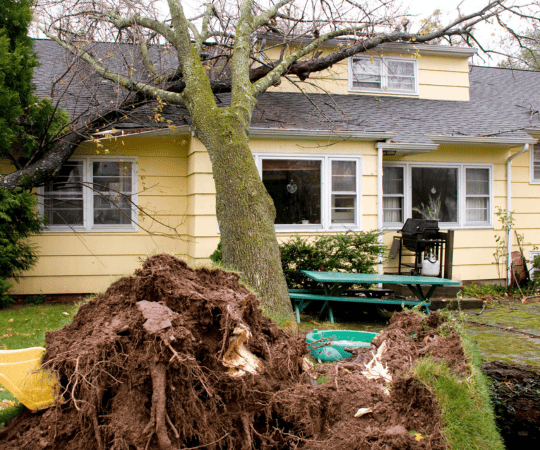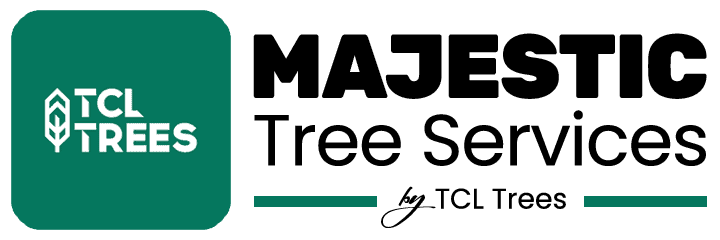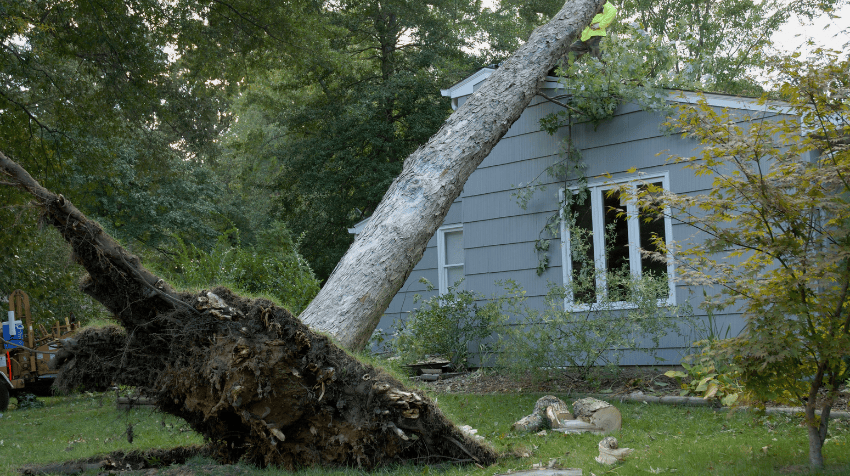Post-Storm Preparedness: Minimizing Tree Damage and Safeguarding Your Property
If you live in an area that is prone to storms, you know how devastating it can be to see the aftermath. One of the most common types of damage is caused by trees falling or branches breaking off and damaging property. While it may be tempting to ignore the damage and hope for the best, taking action is essential to prevent further harm and ensure your safety.
In this article, we will discuss ways to mitigate the impact of tree damage on your property after a storm. You’ll learn how to assess the damage to your trees, prune damaged branches, support weak trees, maintain healthy trees, and consult with a professional.
By following these steps, you can reduce the risk of future damage and protect yourself and those around you. So let’s dive in and get started!
Key Takeaways
- Assess tree damage to identify potential hazards to property and safety after a storm.
- Consult with a professional arborist for informed decisions about which trees need immediate attention.
- Proper tree care and maintenance, including pruning and providing structural support, can prevent damage from future storms.
- Regularly monitoring tree growth and health, documenting changes, and seeking expert advice can ensure trees remain healthy and strong year-round.
Assess the Damage to Your Trees
Don’t panic, but it’s time to take a stroll around your yard and check out the aftermath of the storm on your trees. Assessing tree damage is crucial to identifying hazards that could pose a risk to your property or safety.
Look for any visible signs of damage such as broken branches, split trunks, leaning trees, or uprooted roots. It’s also important to look for less obvious signs of damage such as cracks in the trunk or decayed wood.
These issues may not be immediately noticeable but can weaken the structure of the tree over time and increase the risk of falling limbs or even complete tree failure. Identifying hazards early on can help you make informed decisions about which trees need immediate attention from a professional arborist.
Prune Damaged Branches
When pruning damaged brancheson your trees, it’s important to use proper techniques in order to promote healthy new growth.
Start by removing any hazardous branches that pose a risk to your property or safety.
Then, carefully prune the remaining damaged branches back to healthy wood.
By following these steps and encouraging new growth, you can help ensure the long-term health and beauty of your trees.
Use Proper Pruning Techniques
To keep your trees healthy and reduce storm damage on your property, make sure you’re using proper pruning techniques. Pruning benefits your trees by promoting growth, improving their overall health, and reducing the risk of future damage during storms. Here are five tips to help you use proper pruning techniques:
- Start pruning when the tree is young: You can train the tree to grow in a desirable shape and prevent future issues.
- Identify problem areas: Look for dead or diseased branches, as well as those that are rubbing against each other or growing too close together.
- Use proper tools: Make sure your tools are sharp and clean before you start pruning. Dull tools can cause more harm than good.
- Cut at the right angle: Always cut just outside the branch collar (the area where the branch meets the trunk) at a slight angle to promote healing.
- Don’t over-prune: Removing too many branches can stress out your tree and leave it vulnerable to disease or pests.
By following these tips, you’ll be able to properly prune your trees and minimize storm damage on your property.

Remove Hazardous Branches
If you spot any hazardous branches on your tree, it’s important to remove them as soon as possible to prevent potential danger. Hazardous branches can pose a threat not only to your property but also to the people around it.
To ensure that your tree is safe and secure, it’s crucial to conduct regular tree trimming and maintenance. When removing hazardous branches from your tree, safety precautions should be taken seriously.
It’s important to wear protective gear such as gloves and goggles. You should also have the appropriate tools for the job like pruning shears or saws. If you’re unsure of how to properly remove a hazardous branch or if it requires professional help, don’t hesitate to contact an arborist or tree service company.
Remember, safety always comes first when dealing with trees and their branches!
Encourage New Growth
Encouraging new growth on your trees can be a fun and rewarding experience, as you’ll get to watch them flourish and thrive over time. However, promoting regrowth after a storm can also aid in the rehabilitation of damaged trees.
One way to encourage new growth is by trimming back any broken or damaged branches that may be inhibiting healthy growth. Another important step in promoting regrowth is ensuring that your tree has enough nutrients. Fertilizing your tree with a balanced fertilizer will provide it with the necessary nutrients needed for optimal growth.
Additionally, providing your tree with regular water during dry spells will help it recover from storm damage more quickly. With patience and proper care, you can help rehabilitate your trees and promote new growth for years to come.
Support Weak Trees
To support weak trees on your property, you can use bracing and cabling techniques to reinforce their structure. This involves installing cables or rods to help hold the tree together and prevent further damage from occurring.
In addition, providing structural support such as pruning and adding mulch can also help improve the health of weakened trees. It’s important to monitor the progress of these interventions regularly to ensure that they’re effective in helping your trees recover and remain healthy.

Use Bracing and Cabling Techniques
Maximize the strength and stability of your trees by utilizing bracing and cabling techniques, recommends the expert arborist.
Bracing involves attaching structural support to a tree that has weak or split branches, while cabling involves using cables to reinforce a tree’s structure to prevent it from breaking apart during strong winds or storms.
Here are three benefits of bracing and types of cabling that you can use to protect your trees:
- Benefits of Bracing
- Helps reduce stress on weak branches
- Provides additional support for heavy branches
- Prevents damage caused by wind or snow
- Types of Cabling
- Static Cable: Consists of one cable that runs between two anchor points in a tree.
- Dynamic Cable: Consists of two cables that run between two anchor points in a tree, allowing for flexibility during windy conditions.
- Brace Rods: Used to reinforce branch unions where there is decay or weakness.
By taking proactive measures like bracing and cabling, you can help ensure the longevity and safety of your trees after a storm.
It’s important to consult with an experienced arborist who can evaluate your trees and determine which methods will work best for their specific needs. Don’t wait until it’s too late – take action now to protect your property from potential damage caused by weakened trees!
Provide Structural Support
Make sure you provide structural support for your trees to prevent them from collapsing or breaking during high winds or heavy snow. Tree strengthening is one of the most effective and popular preventative measures for protecting your trees against damage caused by severe weather.
There are many different types of structural supports available, including braces, cables, and bolts. These supports can be installed in a variety of ways depending on the specific needs of your tree.
For example, if you have a large tree with multiple trunks or branches that are prone to splitting under stress, bracing may be the best option. On the other hand, if you have a single trunk tree that is leaning or has weak roots, cabling may be more appropriate.
Whatever type of support you choose, make sure it’s installed properly and maintained regularly to ensure maximum effectiveness.
Monitor Progress
Keep an eye on how your trees are progressing by observing their growth and any changes in their appearance. This will allow you to track recovery and ensure that they remain healthy and strong.
Look for signs of new growth, such as leaves or shoots, which indicate that the tree is recovering from damage. Be aware of any changes in color or texture of the bark, which can be a sign of disease or pest infestation.
It’s also important to document any changes you observe in your trees. Take photos or keep a log of any changes in appearance, growth rate, or overall health. This information can be helpful if you need to consult with an arborist or other tree care professional in the future.
By monitoring progress and documenting changes, you can ensure that your trees recover fully from storm damage and continue to provide beauty and shade for years to come.
Maintain Healthy Trees
You can ensure the health of your trees by regularly trimming dead branches and watering them during dry spells. This provides a lush canopy that invites birds to nest and sing. Proper watering is crucial, especially during hot weather when they need more water than usual. Make sure to water deeply and infrequently rather than frequently and shallowly. This will encourage deep root growth which makes them more drought-resistant.
Fertilization is also important for maintaining tree health. It helps replenish nutrients lost from the soil over time, ensuring that your trees have everything they need to grow strong and healthy. Additionally, pest and disease prevention should be part of any maintenance routine. Keep an eye out for signs of infestation or infection such as holes in leaves or bark damage. Take steps to address any issues promptly before they become bigger problems.
By following these simple steps, you can keep your trees healthy and thriving for years to come!
Consult with a Professional
If you’re unsure about the health of your trees, it’s best to consult with a professional arborist who can provide expert advice and guidance. Tree care services are available to help homeowners maintain healthy trees and prevent damage from storms.
Here are four reasons why consulting with an arborist is a wise choice:
- Arborists have specialized training in tree care and maintenance, so they possess the knowledge needed to assess the condition of your trees.
- They can identify potential hazards such as weak or diseased branches that could fall during a storm and cause property damage.
- An arborist can recommend ways to improve the health of your trees through pruning, fertilization, or other treatments.
- If tree removal is necessary due to disease or structural problems, an arborist can safely perform the task while minimizing risk to people and property.
By seeking out expert advice from a professional arborist, you can ensure that your trees remain healthy and strong year-round while mitigating any potential risks associated with storm damage. Don’t wait until it’s too late – schedule a consultation today!
Frequently Asked Questions
What should I do if a fallen tree damages my property?
If a fallen tree damages your property, prioritize emergency response and contact your insurance company. Document the damage with photos and keep receipts for any repairs or replacements. Act quickly to ensure proper coverage.
How can I prevent tree damage during a storm?
To prevent tree damage during a storm, take preventative measures like regular tree maintenance. Trim branches that are too close to your property and remove dead or weak trees before they become hazards.
Are there any government programs or resources available to help with tree damage cleanup and repair?
There are government aid and financial assistance programs available to help with tree damage cleanup and repair. Contact your local government or FEMA for more information on eligibility and application processes.
Can I replant a tree in the same spot where a damaged tree was removed?
When replanting a tree in the same spot after removing a damaged one, consider soil health. Ensure that the soil is healthy and has enough nutrients for the new tree to thrive.
How do I know if a tree is too damaged to save and needs to be removed?
To assess damage, look for cracks or splits in the trunk, missing bark, and signs of decay or disease. If more than 50% of the tree is damaged, it’s likely beyond saving and should be removed.
Related Source

